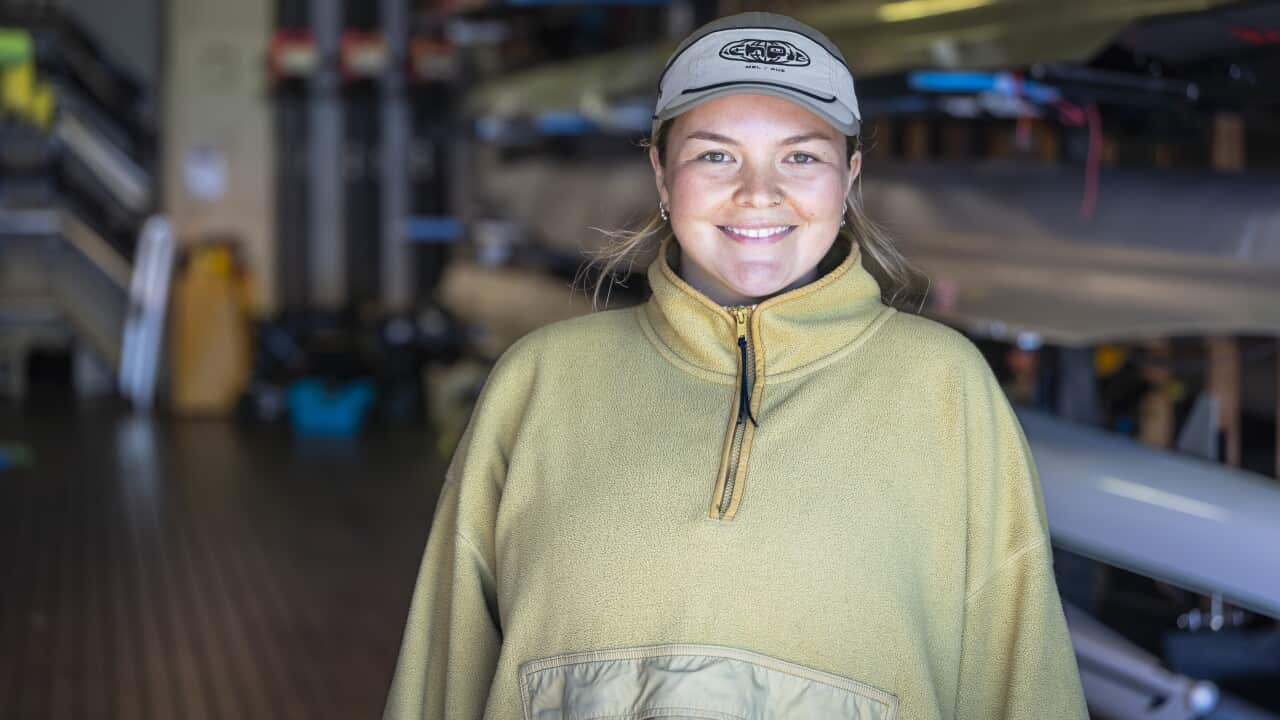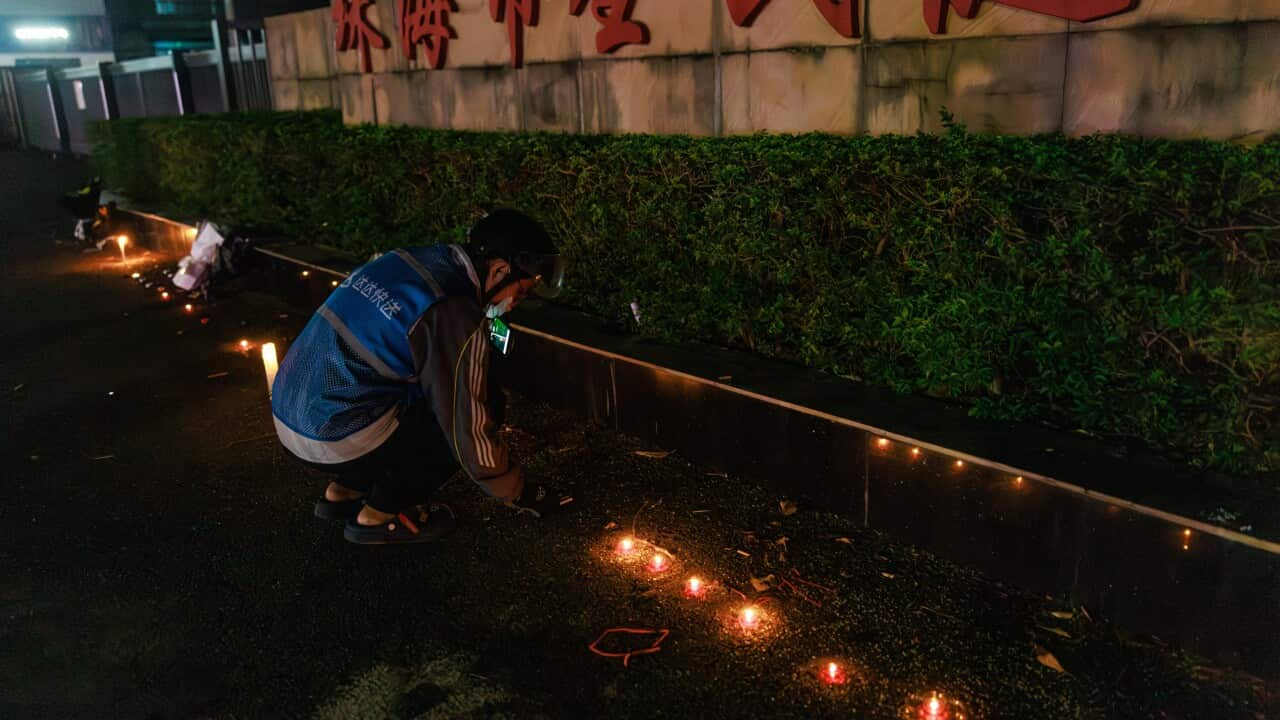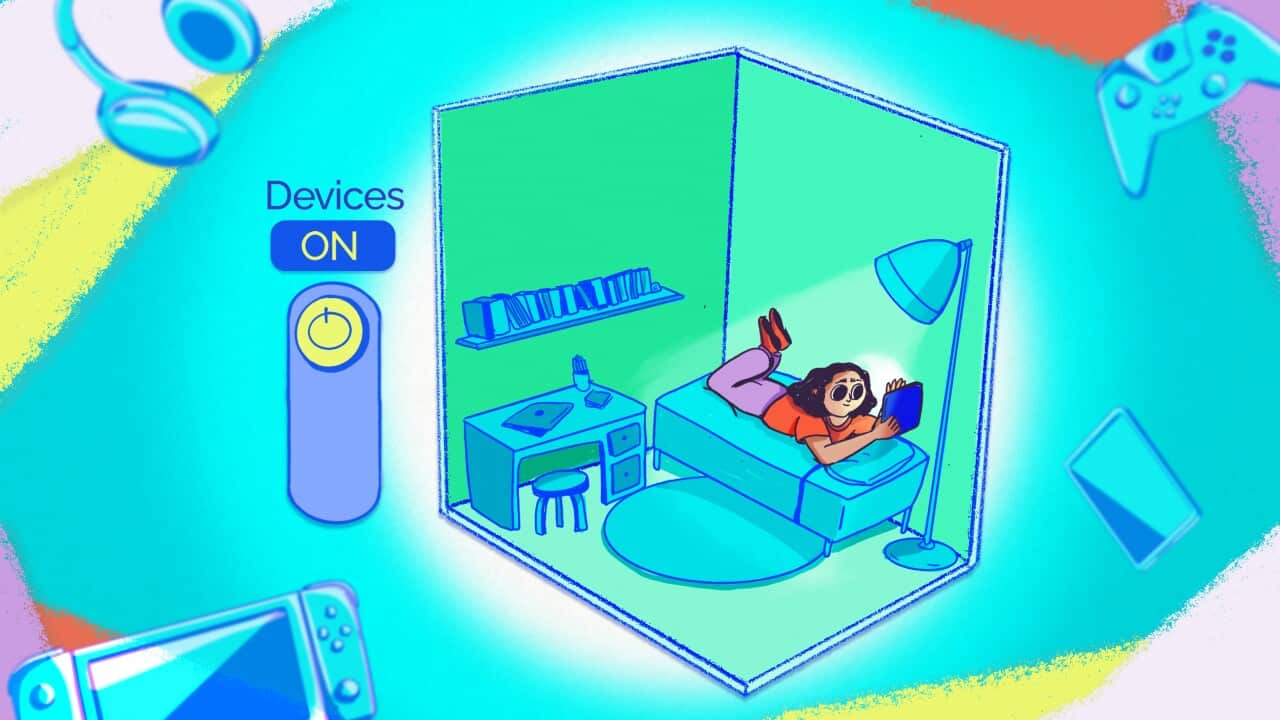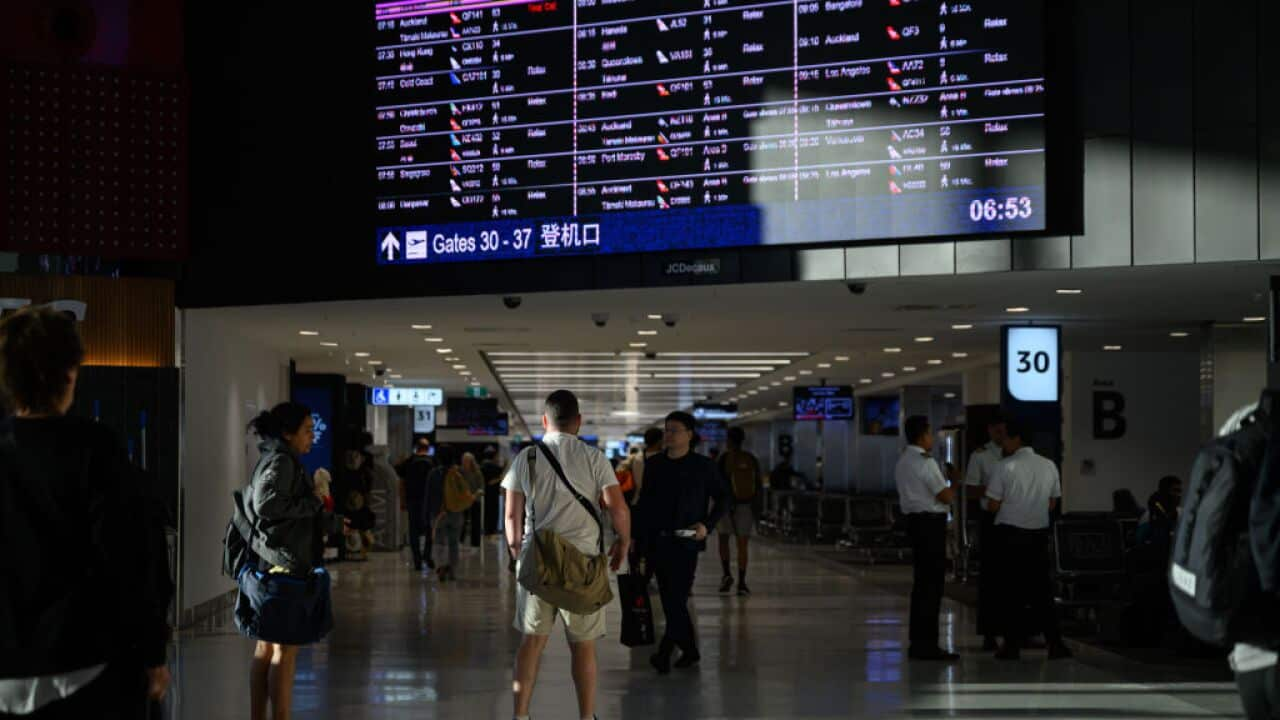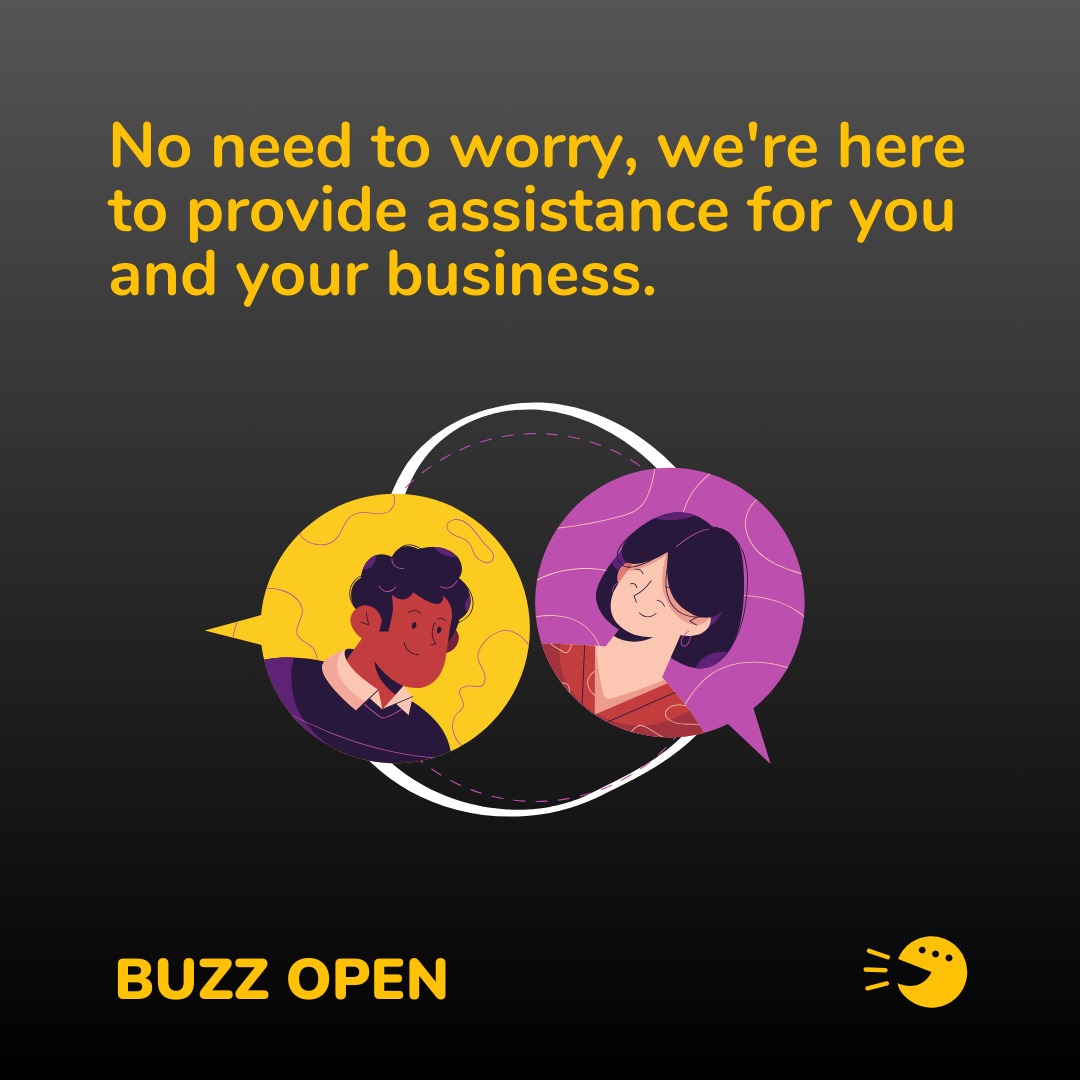But she has faced challenges.

Matilda has been able to row with only one oar until now. Source: SBS / Spencer Austad
Matilda was born with two fingers on her left hand. So, she has only ever been able to row “sweep” — using one oar. This means she can’t row in a single scull.
Now she can.

Matilda rows in a team of eight at the Community Rowing Club on Sydney Harbour. Source: SBS / Spencer Austad
It’s all thanks to a customised assistive technology piece, specially created for Matilda by an all-female team of engineering students at the University of New South Wales through its Assistive Tech Hub (AT Hub).
The designers say it has the potential to help Matilda and many other rowers.

Shevaani Rams, Fiona Chen, and Biruthivi Babu (left to right) studied engineering at the University of New South Wales. Source: SBS / Spencer Austad
Innovative solutions to unusual challenges
The device consists of two parts. One is a prosthetic that fits onto Matilda’s left arm and attaches to the oar, while the other is a mechanism fixed to the rigger that rotates the oar.
To achieve this, the students attached two pieces of metal strings to either side of the oar that would rotate the oar in the right direction at the end of each stroke.

An oar rotation device attached to the rigger allows Matilda to row with both hands. Source: SBS / Spencer Austad
And there were other challenges, too.
“The inner cylinder rotates with the oar, while the outer cylinder stays stationary relative to the oar.”
“Needing to use stainless steel posed an interesting challenge,” Rams said. “But we strategically cut holes in the stainless steel to make it lighter.”
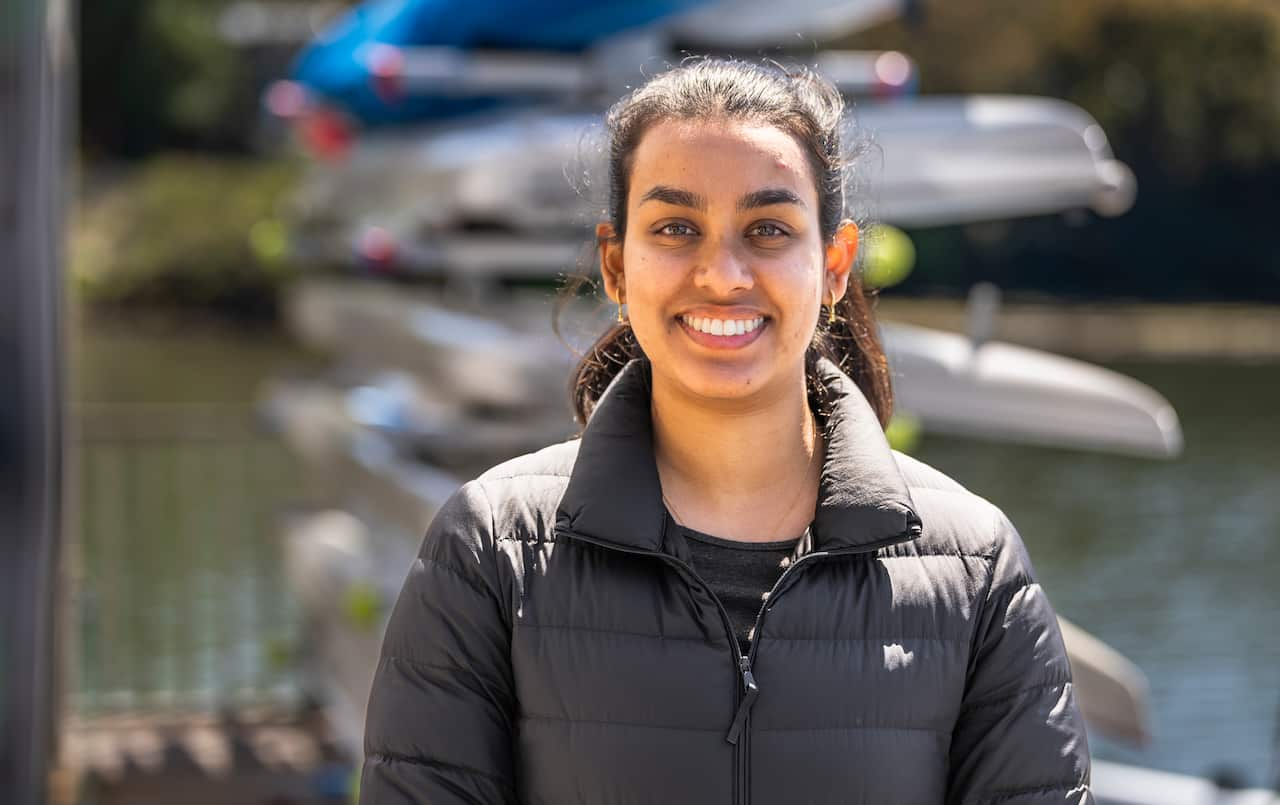
Shevaani Rams led an all-female team of engineering students in designing assistive technology. Source: SBS / Spencer Austad
Staff from the orthotics department at the Prince of Wales Hospital in NSW helped design and craft the prosthetic, with Matilda’s input being crucial to the process.
“How tall you are, the way you sit in a boat is all so personal.”

Matilda can now row with two oars, thanks to the device designed by engineering students. Source: SBS / Spencer Austad
Technology that makes a difference
Community Rowing Club president Barbara Ramjan said: “The [customised] seat is built up on that side and takes into consideration the contours of his body.”

Barbara Ramjan is the president of the Community Rowing Club in Sydney. Source: SBS / Spencer Austad
“It will allow him to row without pins and needles, without having to go and see a physiotherapist and without us having to wait [for] one side of his boat to keep him upright,” Ramjan said.
“I’m able to compete in a whole different category, a whole new level of sport, which is really exciting.”

Emma Su and Shevaani Rams check the oar rotation device. Source: SBS / Spencer Austad
Individual solutions for individual needs
Associate professor Lauren Kark, academic lead of AT Hub, said: “What they have developed can be applied to anyone who may need assistance in turning an oar.”

Associate professor Lauren Kark from Assistive Tech Hub says there is still room for improvement in the development of assistive technology. Source: SBS / Spencer Austad
Beyond the world of rowing, students from the hub have modified musical instruments, desk chairs and toys for people with disability.
Of more than 5 million Australians living with disability, more than 2.3 million use assistive technology, according to the Australian Bureau of Statistics.
“I think something like this is going to be amazing because rowers after me can just use the exact same thing.”

